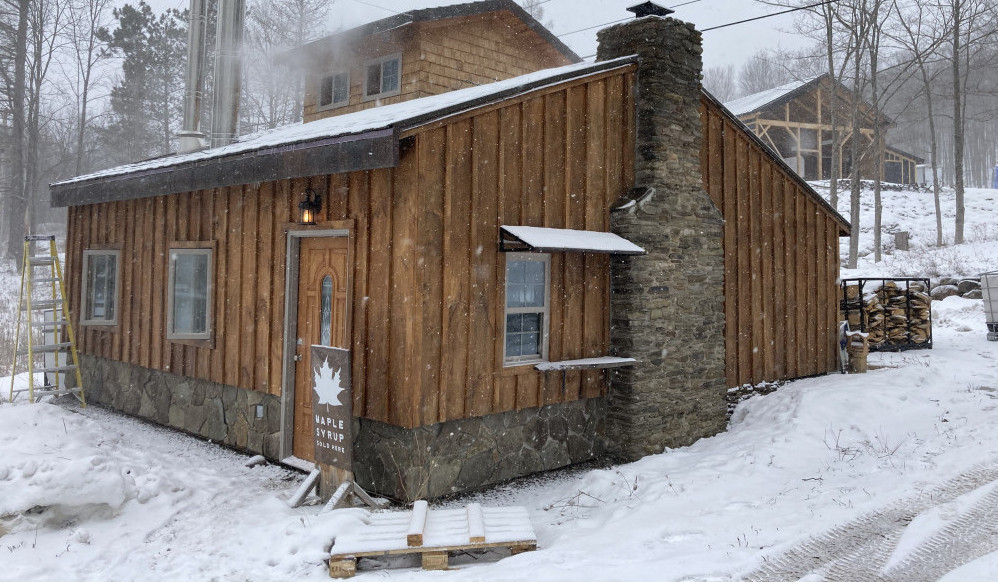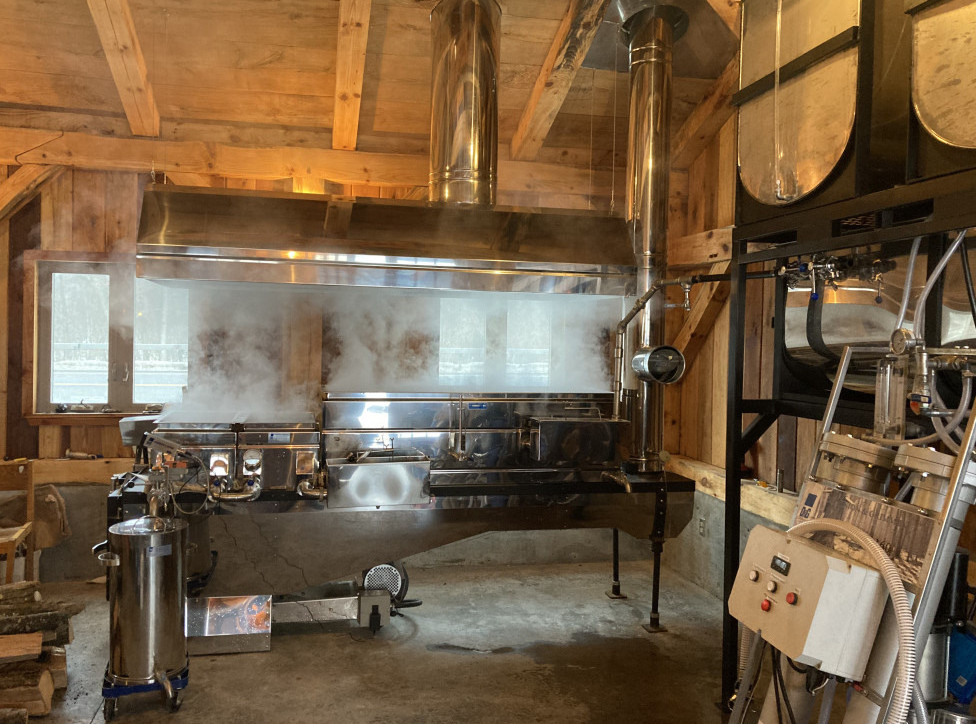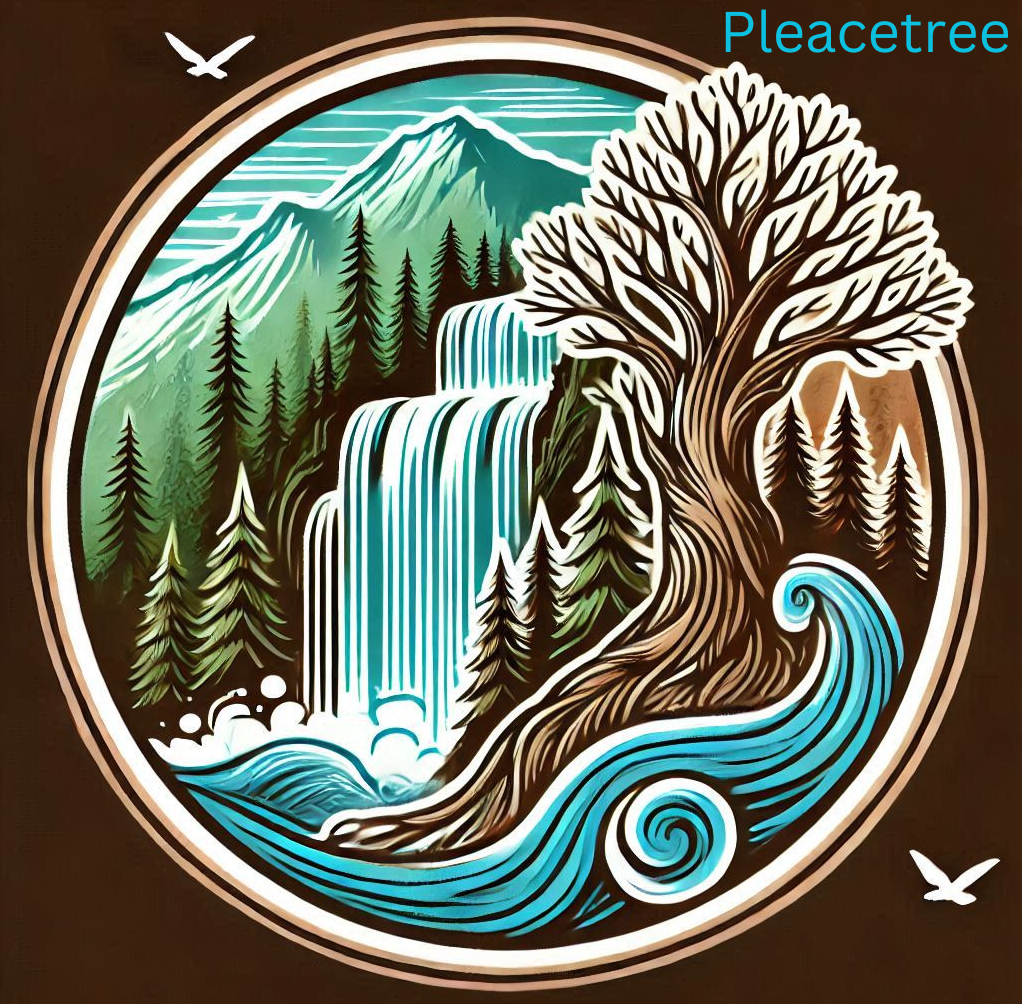
It is getting to be that time of the year when Sugar Maple trees (Acer sacchrum) start getting tapped in the “sugar bush” (stand of maple sugar trees). Sap is then collected in holding tanks which in return will get boiled down or evaporated to produces pure maple syrup.
Sugar maple trees are endemic, meaning they are only found in one geographical location on earth. This location is northeastern North America. Maple syrup production is a great hobby for some people, but its also a full time job and business for others. It takes about 40 gallons of sap to make one gallon of maple syrup.
I have been part of many local farms throughout my life time where maple syrup production was involved. Some of the steps to creating maple syrup include building sugar shacks from the ground up, running lines, tapping trees, then collecting and storing the sap. The next step is boiling the sap on an arch or evaporator to finally bottling it up for consumption and sales.
The first people to make maple syrup
Native American people from northeastern North America where known as the Haudenosaunee (hoe-dee-no-SHOW-nee) “people who build a house”. They were also known as the confederation or alliance amid the six native American nations. The French referred to them as the Iroquois confederacy with each nation having their own identity and uniqueness. While the English called them the five nations which were the Mohawk, Onondaga, Cayuga, and Seneca.
There are many legends to how the Native American people learned about the sweet tasty sap. One of the stories is how in the winter, Maple Sugar trees produced “sapsicles’. Sapsicles are made on trees that had a branch break, then when the tree warms up by the sun, the sap will flow or drip out of the wound. This dripping is then turned into a sapsicle when the temperature drops below freezing at night. After this freezing the Native people would grab an icicle to enjoy which to their surprise was sweet. That is where they found out about the Sugar Maple trees ability to produce sweet sap.
Once they knew about the sugar maple trees sweetness, they would take a hatchet and score the base of the tree in the spring to allow the sap to flow. They would then use spiles, which are hollow sticks from the elderberry shrub to direct the sap to carved out basswood troughs to get a large amount of sap collected. Next they would take hot rocks and place them into birch baskets full of sap evaporating the liquid down. Natives would make sugar cakes because it would store better than syrup does.
Then European Settlers came
Soon after the early European settlers came they started to get acquainted with the natives. They started trading various items. The natives had maple cakes, corn, beans, and squash. Also, bows, hatchets, axes, and arrowheads. Where the settlers had many metal items to trade like guns and knives. They started copying the natives making maple syrup but it was easier while more productive for them because the settlers brought steel and iron kettles, cauldrons and pots.
Large cauldrons were placed over a fire where gathered sap buckets would get dumped into it to expedite the process. In around 1790, the settlers discovered that boring a hole in the tree to place the spile in, then attaching a bucket was much more efficient. They would then use horse and wagon to collect the buckets from the trees and pour the sap into the larger trough in the wagon which then would get delivered to the cauldron.
Soon after the settlers came maple syrup production changed
For a while, the maple syrup suppliers took a downward turn because of the importation of cane sugar. By 1890, white sugar no longer had an import tax so it was out selling maple syrup ten fold.
Not long after cane sugar became popular a man from Vermont welded up and fabricated the first evaporator. This evaporator incorporated a specialized heating pan that contained channels so while the sap was being evaporated maple syrup can finish and get bottled at one end while continuously adding sap at the other. This was a game changer for the maple syrup industry.
New age maple syrup production is here
Like everything else, technology changes and so does the maple syrup industry. Today I assisted in unloading a new electric Eco Vap evaporator so instead of relying on wood to fuel the evaporator their is now electric, oil, propane, gas, and wood evaporators that are much more efficient and effective. Last year I stopped by my uncles maple syrup shack where he installed a new oil fired H20 Innovation evaporator where he can boil 5,000 gallons of sap in 4 hours. This would usually take an old day producer a couple weeks to a month
Besides the evaporators their are many other innovative features to maple syrup production such as the reverse osmosis system. This will take the high 98 % water concentration out of the sap which in turn reduces the time it takes to boil or evaporate the sap down. Another method maple syrup producers are using is a vacuum pump system. These pumps are spliced into the main 1 inch lines flowing to the main tank that pull the sap out of the tree when the temperatures get above freezing to get the most sap draw possible.
Sap runs the best when the temperature gets down to about 20 to 25 degrees Fahrenheit at night then get up in to the 40s during the day. These temperatures fluctuations trigger cohesion and adhesion to create capillary action and the sap pumping mechanism in the sugar maple trees.
Conclusion
Throughout history for nearly 300 years many people in northeastern North America have worked hard in the spring to tap their sugar bush to gather sap and make maple syrup. I can attest that it is a great way to spend time outdoors soaking up the cool crisp air at the end of winter heading into spring. Maple syrup is great in many dishes such as pancakes, waffles, maple syrup topped ice cream, maple syrup topped slushies and I like to put it in my coffee.
It has a good deal of health benefits as well, such as high mineral concentration. The water is getting pumped up the tree out of the ground where it is in the soil or roots, the capallary action gathers the minerals that becomes concentrated in the sap. Maple syrup is delicious! Please give it a try if you have’t. If you have any questions or concerns please leave a comment or email. Thanks.

